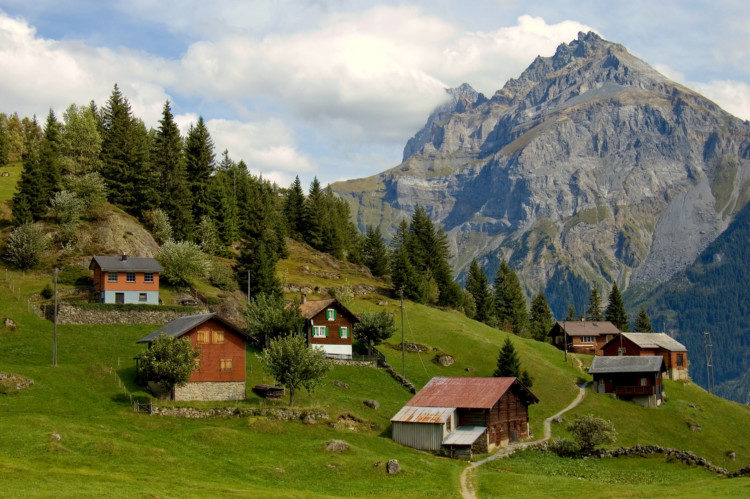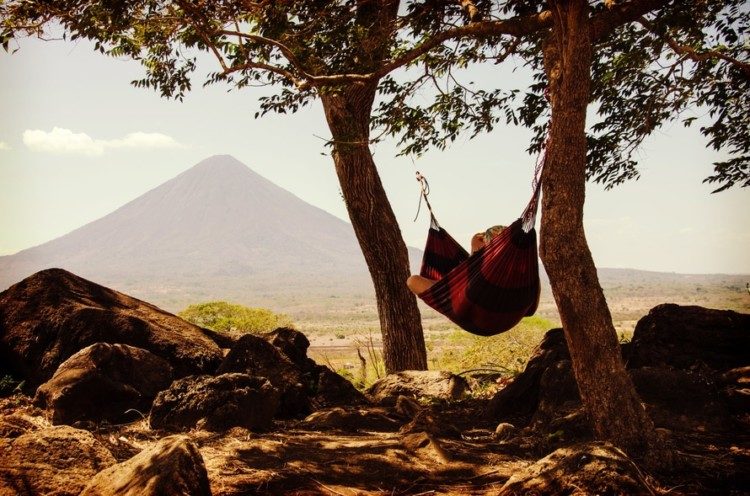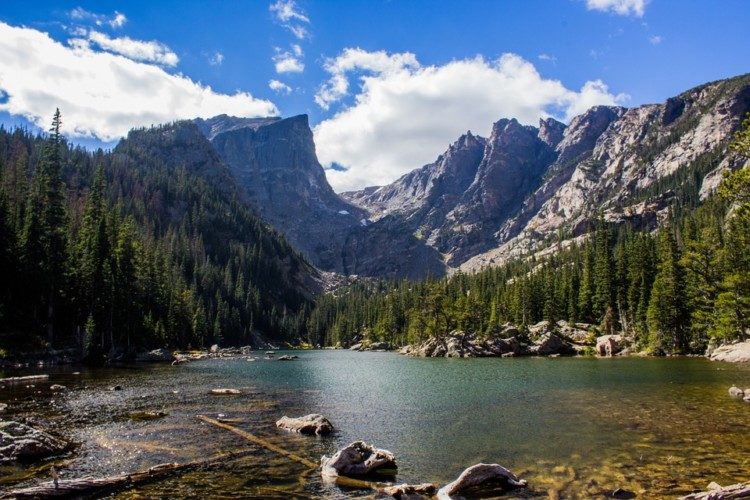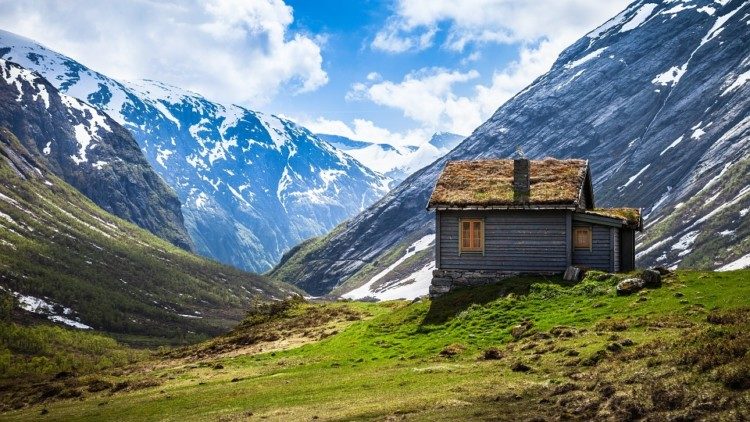Are you a retiree looking to buy some land so that you can downsize into a tiny house? Read these tips first!
10. Take note of any zoning restrictions that may apply

Generally speaking, permitted use and accessory use clauses will allow you build a tiny home on most any rural piece of land you might purchase, regardless of how it is zoned, (though there may be exceptions). For example, a single family dwelling is nearly always allowed on agricultural land, though the plot may need to be of a minimum size, like five acres. Unfortunately, the gentrification of the countryside, driven by wealthy city-slickers and their desire to have an idyllic country home free of “unsightly” people like us and our tiny houses, you would do well to verify these details before you purchase a piece of land.
Also, you may encounter unique challenges with plots of land that are designated as having special historical or aesthetic value, because any home built on such land, if it is allowed at all, will likely have to constructed in a certain way and/or using specific materials. The goal with this kind of land use planning is to ensure that archaeological sites go undisturbed, and that parks and green spaces are preserved in growing rural communities around the country.
9. Restrictive covenants can be both your friend and your enemy

Restrictive covenants are stipulations added to the contract for a piece of land by the current or prior owners to influence how the land can be used going forward. By purchasing the land, you agree to uphold these restrictions going forward. In most cases, these restrictions are perfectly reasonable, and are intended to foil the plots of folks trying to turn a piece of land into a land fill, or a mass breeding facility for dogs, and that sort of thing. However, restrictive covenants are often used as a de facto HOA code by people who want to enforce particular subjective standards on an area. For instance, a contract may require that your home be of a certain minimum size, or that your foundation be constructed a particular way, or that your garbage cans be brought inside by a set time after trash pickup. You might even be restricted to certain colors for the exterior of your house, whether you can own pets, and whether not you can cut down trees on your own land. A common restrictive covenant is to ban mobile homes, so if your goal is to own a tiny house on wheels, you’ll definitely want to be sure that’s allowed on the land you’re looking to buy. Conservative-leaning regions often place bans on renewable energy technology like solar panels and wind turbines, citing them as “eye-sores”. It may also be that your options for the placement of your home or gardens are limited because it would alter a neighbor’s viewing corridor, in which case you might have to their written consent for some of your plans.

I don’t know about you, but I like to live in a place where I can do what I want, how I want, when I want, (within reason). If that spirit resonates with you, you will want to be doubly sure when you review your contract prior to signing that you can live with any restrictive covenants placed on the land – avoid a tendency toward optimism-bias at a time when you’re excited about getting started on the road to living your tiny house dreams for real. Down the line, you may find that the compromises you end up having to make spoil things for you. By the way, there is almost always room for negotiation when it comes to restrictive covenants, so don’t treat it like a deal-breaker if the prior owner is making a reasonable request that you can still honor while making a few modifications to meet your own needs.
8. Get acquainted with your easements and right-of-way access

There are two common phrases you need to be aware of, when it comes to land deed legalese: benefited easements and burdened easements. Obviously, every piece of land requires some sort of access point for the people who are going to use it, and depending on the layout of a given plot, relative to the surrounding roads and waterways, you may find that your options on a piece of land are limited so that your neighbors can access their land. For instance, if an adjacent plot is “land locked” behind your piece of land, the owner of that property may have the right to travel over your land to get to their own, and you may even be required to ensure that the road they are using is maintained to a certain level, which could necessitate that you cover it with gravel, mow it periodically, or otherwise alter your plans in that area. The same may apply to waterfront property, in which case other members of your community may have the right to travel over your land in order to reach a boat ramp or something along those lines.
Along with these rights, your neighbors may be entitled to have utilities and other municipal services routed across your land, even if it means demolishing or otherwise altering improvements on your property. Of course, utility companies will usually be willing to work with you, but when push comes to shove, they may have to dig a trench through your beloved garden, or cut down some trees so that machinery can reach a certain spot to do the work that needs to be done. You should also take note of any general code requirements that will necessitate that your home and outbuildings stand a certain minimum distance from a property line, for example.

On the other hand, if you are looking at buying a land-locked piece of land, you will want to ensure that you have rights to access it by reasonable means. Don’t assume that you will have the right to access a piece of land in a vehicle, since some plots are restricted to access by horseback or on-foot only. This will be of particular importance for those who have special needs to consider, such as wheelchair access.
Don’t fret though, because these kinds of easements are very common and routine when you’re looking at buying land, and if you’re working through a realtor, they will no doubt be familiar with these things and can help you ensure that your rights are covered before you sign a contract. In a vast majority of cases, the stipulations made to a contract when it comes to easements will be perfectly sensible and planned out well in advance. However, there may be stipulations on a piece of land that are widely accepted and customary in an area that may come as a surprise to you. For example, in west Texas where I grew up, it wasn’t uncommon for landowners to be required to allow cattle ranchers in the area to graze their herds, to the point that ranchers were allowed to deliberately cut fences so that their animals could access fresh pasture. In some places, catching rainwater is forbidden because those same cattlemen have a right to the rainfall on your property before you do. If you don’t want to deal with that sort of thing, make sure that you fully understand what access rights others may have to your property.
7. Ensure that you have easy access to roads and utilities

Whether your plan is to work remotely online, or you intend to commute to work every day, you need to ensure that your plot of land is accessible to roads and utilities. Living a mile from the geographical middle of nowhere has its advantages, but know that the costs of constructing your home can be multiplied by several times, and that construction may well be impossible for at least part of the year of delivery vehicles aren’t able to get to your build site. Similarly, installing the cable for your high-speed internet could cost more than you’re likely to earn in your entire lifetime, if the telecommunications company has to dig a trench through miles of stony ground to reach your little cabin perched on the edge of the world. Roads that are acceptable to rural folks, who don’t mind being snowed in for six weeks between January and March, might prove a problem for you, if your nine-to-five is thirty miles away in town, and small country communities often down have the resources to build bridges over those low water crossings that rise when the spring rains arrive.
Alas, there are large swathes of the country that may not have speedy internet, cellphone reception, or curbside recycling for many decades to come. You might do well to introduce yourself to some of your prospective neighbors and quiz them a bit about what life is really like at different times of the year, and be certain that you have realistic expectations before you sign the dotted line.
6. Evaluate the lay of the land

Slope, elevation, orientation to the wind, access to sunlight – these are some of the topographical factors that can radically influence how a plot of land can be used. More often than not, when land is attractively priced it means that there are some significant reasons that no one else wants it. For example, you might save a lot of money by buying land with a steep slope, or a particularly high water table, but then spend a fortune building a house on it such that erosion won’t undermine the foundations. Natural land features, such as rocky escarpments, dense tree cover, rivers or fault lines may lead to odd-ball sizes and shapes of property where your opportunities for house placement will be drastically reduced.
5. Take note of your soil composition

When you get into the nitty gritty of the grit underlying the soil, there can be major differences and stark contrasts even within a small area. One plot of land may have clay soil where your garden will always struggle to grow, while a neighboring property might have sandy alluvial soil full of river rock, where water retention is a perennial problem. Water table depth, topsoil composition and so many other details can radically influence the costs of constructing your tiny home and installing the other improvements you are going to want, such as a well or municipal utilities. It is especially important that you evaluate these factors if you have a particular use in mind for your land.
4. Get acquainted with the local climate

Every region of the country has its host of climactic considerations, ranging from tornadoes and hurricanes to snowfall several feet deep and droughts that last for years on end. Depending on where your plot of land is located, any of these caprices of Mother Nature could have an incalculable impact on your quality of life once you move on to your property, and will likely exert an enormous influence over the form that your home can take, as well as how much it will cost you to build it. For example, building code requirements in an area prone to hurricanes may necessitate costly inspections and alterations to your house design that would not be involved in a project undertaken in another region.
3. Learn about the local industries

If you happen upon a beautiful piece of land that seems well-situated in a good area, with minimal problems in terms of weather, layout and composition – but it’s being offered at a bargain price – you would do well to wonder why. Chances are, there is a reason the land isn’t desired by the locals, such as proximity to a noisy airport or railway, an unsightly garbage deposit sight, or some kind of high-impact industry like an electrical power plant, manufacturing facilities and factory farms. Smoke, industrial off-gassing, foul odors and high levels of road traffic will definitely influence your quality of life on a piece of land. (You don’t want to live downwind from a ten story warehouse full of swine defecating twenty-four hours a day… trust me.)
Danial, good friend of mine, recently purchased a plot of land near Eugene, Oregon, for instance. In that area of the country, grass seed farming is one of the major industries, and for most of us, that would be perfectly harmless. Daniel, however, is highly allergic to grass pollen and, since he made the mistake of buying the land before visiting it in person, he realized too late that he would never be able to live there comfortably. He tried for a while, despite himself, and wound up in the hospital with life-threatening respiratory problems. Now he’s living in a hotel, drawing down the savings he planned on using to build the small home of his dreams, while he waits for his land to sell.

Conversely, if you’re a retiree that requires special medical care, or you expect your use of medical facilities to increase as you age, (which you should,) then you will want to ensure that your new home is within reasonable proximity of a hospital or a routine healthcare provider that is willing to accept your health insurance. Similarly, if you plan to travel occasionally to your family over the holidays, make certain that you don’t settle too far away from an airport or railway terminal, (or your favorite golf course).
2. Be neighborly

Those of us in the tiny house movement are often attracted to rural areas because we hope to find a little fresh air and elbow room, or because we want to escape the building code requirements that inhibit us from living in the kind of tiny house we really want, and these kinds of reasons. Unfortunately, there are lots of other folks who are drawn to the countryside for similar criteria. Religious cults, paramilitary separatist organizations, nudist colonies – you name it, and you’ll find it somewhere in the rural areas of the country. (Hyperbole aside, you actually may have a dog-loving neighbor who has no qualms about letting his animals chase your chickens all day, following by barking all night long.)
Before you settle on buying a piece of property, you should introduce yourself to the neighbors and make sure that they are people that would be content to live near. Luckily, an overwhelming majority of people are lovely, friendly and very hospitable, and chances are, you will get along perfectly well with your neighbors most anywhere you might go. My community, for example, is located near a small town inhabited largely by a local Mennonite group. On more times than I can count, they have proven themselves to be invaluable friends and allies when an emergency arises, (like the time one of my neighbor’s roof blew off in a powerful Midwestern wind storm,) and they even operate an astonishingly well-stocked general store where goods are sold at almost wholesale prices, because they want to provide a service to the people living in the area.
1. Familiarize yourself with the factors that underlie land prices in your area

By now, I think I’ve made it abundantly clear that buyers should beware when land is being offered at a price that seems too good to be true, but there is another side to that coin. Land is universally regarded as a wise investment by those who are looking to build their wealth, and with good reason, but often times the price of a given plot of land can be artificially inflated far in excess of what it is actually worth by hype and other social circumstances. For instance, if a piece of land happens to be near the private ranch of a well-known celebrity, you may find the well-to-do spending millions for a plot of land hardly big enough for a postage stamp, only to have property values plummet when the stars move their mansions elsewhere. (You’ll also want to make sure that you aren’t being gouged by someone looking to take advantage of folks who aren’t familiar with the cost of tiny houses relative to more traditionally sized homes – have a look at this article to learn more.)
Land prices aren’t determined in a vacuum, so before you decide whether the price of a given piece of land is fair, make sure that you’re familiar with the circumstances involved in the setting of that price. Land in the Pacific northwest, or the Texas hill country are hot commodities right now, but that may not be true in ten years from now, and unless you can live with potentially losing tens of thousands of dollars, you would be wise to factor the ebb and flow of current trends in your considerations. Of course, you also need to be clear that you’re truly comparing apples to apples.

Now that you know what to bear in mind during your search, you’re ready to start looking at pieces of land in the areas where you’d like to live. Check out this article to learn about some of the top places to search for land for sale online, if your goal is to build a tiny home from the ground up. Or, if you’re more interested in a small house that ready to move in to, spend some time looking for a tiny house for sale on a piece of land that matches what you’re looking for – my favorite place to go is Tiny House Listings.


Is there a listing of communities for tiny homes? When I do a search all I come up with are RV parks. Ideally I would like to find a tiny home community the that share resources such as community gardens.
Thanks!
Doug
Hey Doug, I’d recommend checking out http://www.dancingrabbit.org – this is the community where I live. We aren’t a tiny house community per se, but we do have more than a dozen tiny homes of various types, and loads of garden space for rent. 🙂
Dancing Rabbit also has many cooperatives: kitchens, gardens, growers, vehicles, and energy, just to name a few!
“Unfortunately, the gentrification of the countryside, driven by wealthy city-slickers and their desire to have an idyllic country home free of “unsightly” people like us and our tiny houses, you would do well to verify these details before you purchase a piece of land.
What happened to being neighborly? This snark doesn’t help. Many people owning country homes could provide space for tiny homes and even employment as caretaker/assistant if you open your mind.